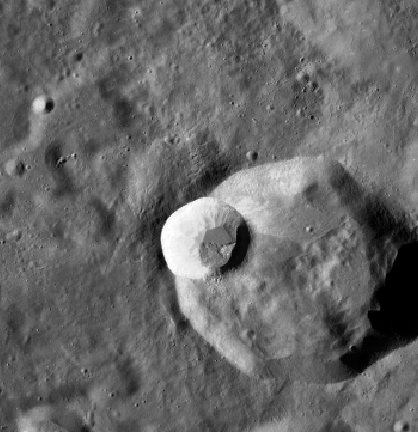Difference between revisions of "Wargo"
| Line 6: | Line 6: | ||
<div id="toc"> | <div id="toc"> | ||
[[Image:Wargo.jpg|Wargo.jpg]]<br /> | [[Image:Wargo.jpg|Wargo.jpg]]<br /> | ||
| − | * Image<span class="membersnap">- | + | * Image<span class="membersnap">- JohnMoore2</span> The much larger crater east of '''Wargo''' is '''[[Joule|Joule]] T'''. |
<br /> | <br /> | ||
==Images== | ==Images== | ||
Latest revision as of 20:45, 16 April 2018
Contents
Wargo
| Lat: 27.68°N, Long: 148.62°W, Diam: 13.9 km, Height: km |
- Image- JohnMoore2 The much larger crater east of Wargo is Joule T.
Images
Maps
LAC zone (near the upper left corner of LAC 52)
Description
- Bowl-shaped high albedo crater on the western part of Joule T's rim. On page 104 (LAC 52) of the Clementine Atlas of the Moon (Bussey / Spudis) this high-albedo region (both Wargo and Joule T) shows up as a white spot without much interior details. - DannyCaes Jul 27, 2017
Description: Wikipedia
Additional Information
- Wargo was officially named by the IAU on 25 July 2017
- An investigation of the High Resolution NAC close-ups of Wargo and its much larger eastern neighbour Joule T in the online LROC Act-React Quick Map reveals all sorts of weird surface formations up there. I wonder if this might have been the reason to give that rather small bowl-shaped crater its own official IAU name. According to the rules of the IAU there's always some sort of scientific reason...- DannyCaes Jul 27, 2017
Nomenclature
LPOD Articles
LROC Articles
Bibliography
